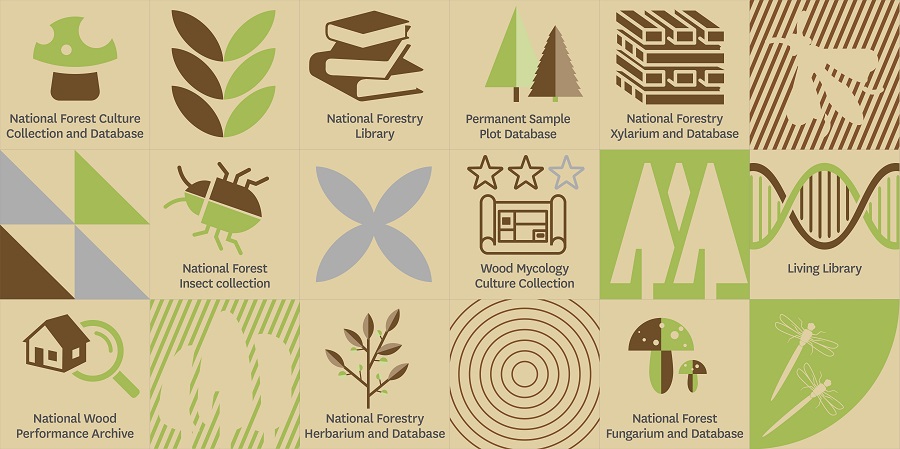Collections a 'living memory'
Scion’s 10 nationally important collections and databases allow us to grow our knowledge.
Behind Scion’s walls are tens of thousands of insect specimens dating back 75 years, thousands of fungal specimens dating back to the 1800s, an internationally registered collection of wood and a critical database of forestry publications. They are among the 10 nationally important collections and databases Scion is custodian of.
Forests and Landscapes general manager Tara Strand says the collections are a “living memory” relating to almost all aspects of Scion’s research and act as a fundamental baseline for research or a launch point for the next innovation.
“The collections allow us to build on the research and observation foundations set by previous researchers. These collections are invaluable as they allow us to grow and expand our knowledge.”
The collections help Scion’s researchers understand what has been done in the past, what worked or did not and the gaps that remain.

Scion’s 10 databases and collections are:
- National Forest Culture Collection and Database – Living collection of almost 6500 fungal specimens. Supports diagnostic services and plant pathology research useful for plant disease research.
- National Forestry Herbarium and Database – Collection of plants significant to plantations and New Zealand indigenous forestry.
- National Forest Insect collection – About 150,000 forest insects from around the world. Supports diagnostics services and taxonomic research. This collection is also referenced for biosecurity purposes, for example to determine if an insect is ‘new to New Zealand’.
- National Forest Fungarium and Database – Forestry focussed collection of almost 5,000 dried fungal specimens. Supports diagnostic services and pathology research.
- National Forestry Library – Publications relating to forestry and wood processing research from the last 75 years from all over the world.
- National Forestry Xylarium and Database – 8,000 wood blocks from around the world representing 4,500 species. An invaluable resource for wood anatomists recording the diversity of the world’s trees.
- National Wood Performance Archive – 75 years of wood durability and performance records gathered from four sites nationwide. Used for developing standards and building code.
- Permanent Sample Plot Database – Database of forest sites used to measure growth and development of plantation forest trees nationwide.
- Tree Living Library – Living collection of genotypes for gene conservation, archival history, and germplasm resources.
- Wood Mycology Culture Collection – Mould and decay fungi isolated from the leaky building syndrome, other buildings and wood products across New Zealand. Supports evaluation of wood products to be used in New Zealand buildings.
